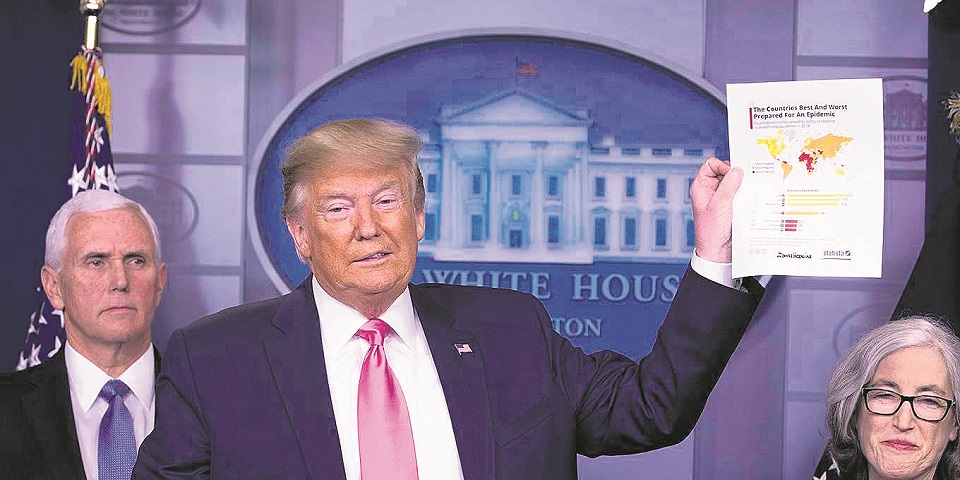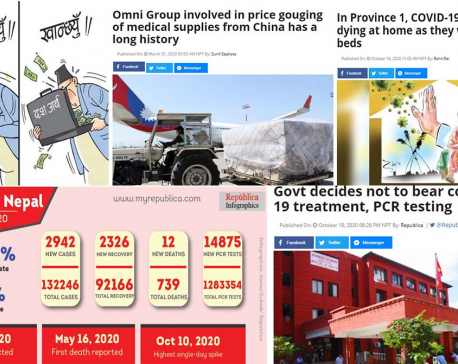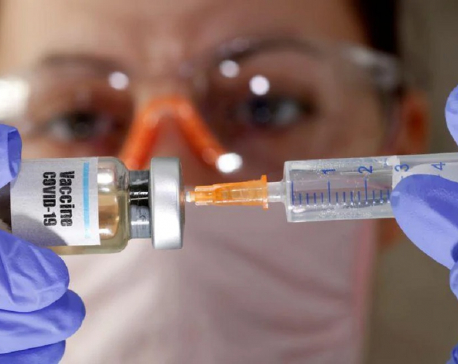
OR

More from Author
The US government should have stand-by authority to allocate essential medical supplies, in order to ensure that the whole population has access to basic protective equipment and medications, based on need and regardless of income
AUSTIN – When the Japanese attacked Pearl Harbor, the United States was surprised and unprepared, but it was quickly freed of its illusions. The same does not hold true for the COVID-19 epidemic. The attack is underway and our defenses are down—but so far our illusions remain intact.
That will soon change as the infection rate and death toll rise, while the stock market sinks. Global supply chains have been disrupted by events in China, and India has just banned the export of certain generic drugs. Medical masks are already in short supply, and everyday items such as hand sanitizer have become difficult to find. The heavily globalized, consumer- and finance-driven US economy was not designed for a pandemic.
The country’s medical system has it even worse. America has vast health-care capacity, but millions of people are uninsured, underinsured, undocumented, or simply reluctant to go to the doctor or emergency room, owing to the cost of co-payments, deductibles, and uncovered fees. In a pandemic—where every infected person is a threat to the entire population—this is a formula for disaster. Everyone must be able to come forward, get tested, and receive free treatment without fear of consequences—including the very poor, the homeless, and the undocumented.
US medical personnel are not equipped, and facilities are not designed to manage a potential explosion of people needing isolation and specialized care. Hospital beds and quarantine units may be required where outbreaks overwhelm local capacity, and moving sick, infectious people over distances to available open beds is a risky policy. Effective training for those caring for the quarantined is critical; otherwise, the virus will spread among support staff. Medical supplies such as test kits and hazard suits must also be delivered where and when they are needed.
The flow of ordinary civilian supplies also presents a risk. The reserve purchasing power of US households is vast; if they decide suddenly to stockpile dried and canned foods, paper towels, batteries, aspirin, and other basics, these mundane items could run short. And if factories and distribution chains are closed down, the problem can cascade as each shortage spurs a new wave of panic. At the very least, prices will rise and low-income households might be shut out.
All these problems are aggravated by widespread lack of trust in the US authorities and in the commercial media. To solve this, the government must empower the Centers for Disease Control and the Federal Emergency Management Agency to tell Americans precisely what is happening and to give clear, credible instructions. Direct, regular mass communication from competent scientific professionals, rather than from politicians and the media, can help to maintain calm, promote low-risk behavior, and avoid panics.
Furthermore, the Centers for Medicare & Medicaid Services should be authorized to cover the full costs of testing and treating COVID-19 cases, with no exceptions and no legal risks. Making tests and treatment “affordable” is not enough; the disease cannot be isolated by economic class. In a pandemic there is no acceptable alternative to making care universal and free of cost.
To finance the necessary facilities, Congress should establish a Health Finance Corporation on the model of the Depression-era Reconstruction Finance Corporation. Like the RFC, which built munitions factories and hospitals during and after World War II, the HFC should have broad powers to create public corporations, lend to private companies (to fund necessary production), and cover other emergency costs. Even more quickly, the National Guard can be deployed to deal with critical supply issues and to establish emergency facilities such as field hospitals and quarantine centers.
The Federal Reserve can buy up debt issued by hospitals and other health-care providers, as well as working to stabilize credit markets, as it did in 2008-09.
Finally, the US government should have stand-by authority to allocate essential medical supplies, in order to ensure that the whole population has access to basic protective equipment and medications, based on need and regardless of income. Most of these items are simple and inexpensive, so supply problems may be short-lived. But if they are not tackled quickly, the government has the power under the Defense Production Act of 1950 to give orders the private sector, and prices should be controlled to prevent profiteering.
Compared to a world war, COVID-19 is a relatively small problem that should be manageable. But controlling a pandemic nevertheless requires mobilization: a comprehensive approach spanning resources, services, finance, and information. The public needs to feel the urgent necessity of radical behavioral changes, the disruption of daily routines, and firm measures to prevent destructive speculation by those looking to make a quick buck.
Again, the attack on Pearl Harbor offers a useful precedent. Within two days, the US had declared war and started shifting to a war footing. As the Japanese advanced on Malaya, the US issued a nationwide ban on the sale of rubber tires to quell panic purchases and protect essential users, as well as a 35-mile-per-hour speed limit to save rubber and motor fuel. These orders were swift, decisive, and generally accepted. They showed that the American public can rally around a common purpose when necessary.
With the COVID-19 epidemic bearing down, Americans should now remember our own history. We have confronted larger crises before. The same institutions, practices, and sense of public spirit that served our parents and grandparents can serve us, too. But there is not a moment to lose.
James K. Galbraith, a former Executive Director of the Joint Economic Committee, is Professor of Government and Chair in Government/Business Relations at the Lyndon B. Johnson School of Public Affairs at the University of Texas at Austin.
He is the author, most recently, of “Inequality: What Everyone Needs to Know” and “Welcome to the Poisoned Chalice: The Destruction of Greece and the Future of Europe”
© 2020 Project Syndicate
www.project-syndicate.org
You May Like This

As Oli government limits its role to counting deaths during the greatest public health crisis, people are dying at an alarming rate
Experts say the government has decided to shred the constitution ... Read More...

Coronavirus hitting the Americas hardest says World Health Organization
ZURICH/GENEVA, June 12: The Americas are bearing the brunt of the global coronavirus pandemic at present, the World Health Organization... Read More...

How Covid-19 changed everything
A week ago, life was different. As I am almost getting done with my PhD, I had planned each day to... Read More...








Just In
- NRB to provide collateral-free loans to foreign employment seekers
- NEB to publish Grade 12 results next week
- Body handover begins; Relatives remain dissatisfied with insurance, compensation amount
- NC defers its plan to join Koshi govt
- NRB to review microfinance loan interest rate
- 134 dead in floods and landslides since onset of monsoon this year
- Mahakali Irrigation Project sees only 22 percent physical progress in 18 years
- Singapore now holds world's most powerful passport; Nepal stays at 98th











Leave A Comment